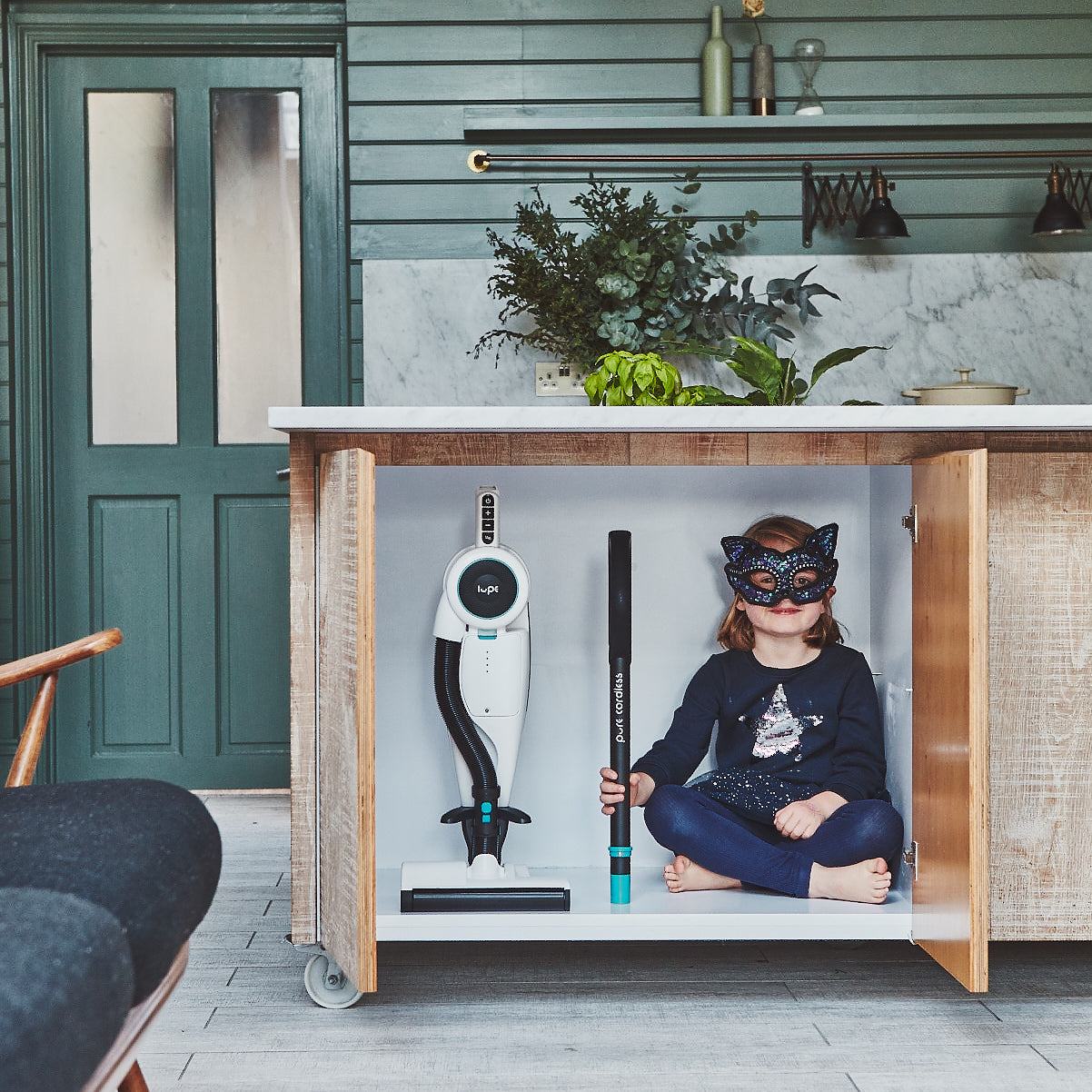there is more than one type of suction? confusing…
Floorcare marketers come up with many different metrics to help sell vacuum cleaners which is pretty normal, right? Well, the problem is these metrics are often confusing and do not tell the whole story.
It takes a lot of time and money to educate customer prospects and, therefore, larger brands get to lead the way and, conventionally, other brands follow… but not here at Lupe.
In this journal we will talk you through the difference between suction power and what we like to call useful suction. Fingers crossed, this should help lift the veil of mystery around vacuum cleaning performance and help you make a more informed choice when buying your next machine (it might even persuade you to buy a powerful vacuum cleaner ...).
what is suction power?
Suction power is a common metric used in the floorcare industry today that is designed to help consumers gauge the performance of vacuum cleaners.
The standard laboratory test requires the use of specialist vacuum cleaner equipment to measure the air watts at both the end of the hose and at the cleaner head (both sealed to the test equipment). Air watts refer to the number of watts used by the vacuum cleaner to carry a unit of air through an opening or nozzle. The higher the air watts, the higher the suction power.
so I should buy a vacuum cleaner with the highest suction power possible, right?
Afraid that there is more to it than that ... We found when developing the Pure Cordless that there was a fundamental problem with the current suction power metric that could mislead consumers into buying a vacuum cleaner that is not as good as they think.

It all comes down to the cleaner head design, so let us focus on this.
The suction power test requires the bottom of the cleaner head to be completely sealed to the test equipment. This is a good measure of the amount of air the vacuum cleaner motor can move through a controlled test with the cleaner head sealed to the test equipment. BUT (yes here is the “BUT”) … you might be wondering: "how does it perform in the real world, as I don't glue my vacuum cleaner head to the floor?"
This leads onto the biggest challenge in vacuum cleaner head design: trying to seal the cleaner head to the floor for great performance whilst still allowing large debris to enter the head.
Vacuum cleaner brands have tried many different things to achieve the best of both worlds, such as:
- - Multiple cleaner heads
- - Adjustable flaps on the cleaner head
- - Adjustable height on the cleaner head
- - Different shape and size air gaps on the cleaner head
After scratching our heads for a while here at Lupe we eventually came up with our own test to measure what we call “useful suction”. Not only is this a more useful test for all vacuum cleaners, but it shows how well the Pure Cordless works whilst still relating to the real world.
what is useful suction?
Well, our test involves measuring the pressure underneath the cleaner head that is not sealed to any test equipment. The higher the pressure reading, the higher useful suction.
The important difference is that, because the cleaner head is not sealed to any test equipment, it more truly represents how good the pickup performance will be in the real world.

So, now you are telling me: "I should buy a vacuum cleaner with the highest useful suction possible?". Yes, you should, but (a smaller “but” this time) it is important that the vacuum cleaner head allows large debris to enter the head. If the cleaner head does not allow debris into the head, it will just push debris forwards and it will be very difficult to pick up any large debris without manually lifting the vacuum cleaner.
Let us look at some cleaner head design examples to help explain this in further details.
For simplicity, we will say that all of these vacuum cleaners have the same suction power, and it is therefore down to the cleaner head design as to how well they A) perform with useful suction and B) pick up large debris.

You can see that, whilst most vacuum cleaners struggle to achieve both high useful suction and very good large debris pickup, the Pure Cordless outperforms the competition thanks to its patented cleaner head design.
I need a visual explanation of the useful suction test
Watch the video from Vacuum Wars that explains the difference between suction power and useful suction as well as tests the Pure Cordless against many competitors.
